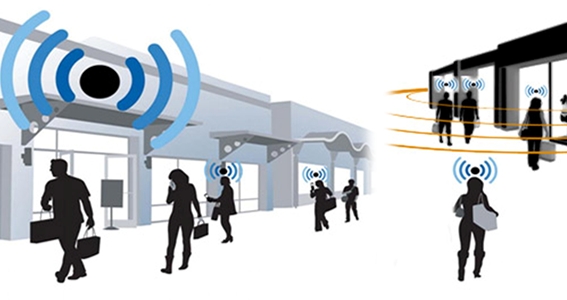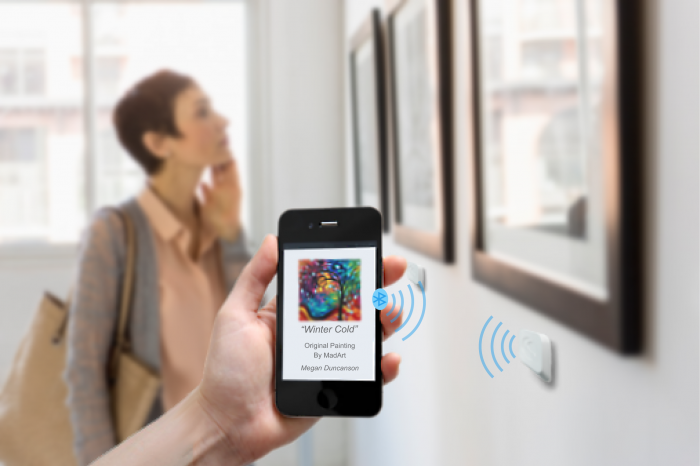Since the e-commerce take over in recent years, retail stores have felt the pain. More and more consumers have begun doing most of their shopping online, through stores such as Amazon, Zappos, and Alibaba. It is quick, easy, and convenient. But that isn’t enough, e-commerce still lacks a major aspect of shopping that consumers want. Which is a physical, real world buying experience.
Consumers want to do more than just purchase a product. They want to gather information and see the product in use. They want to test the product and see how it feels when they use it. Consumers enjoy visualizing how a product will fit into their life. This is key part of what makes up the “buying experience” and consumers want the entire experience when purchasing a product. This is something e-commerce cannot offer like offline commerce can. But all is not lost.
The reawakening of offline commerce – Proximity Marketing

Enter proximity marketing
The advantage that e-commerce has over offline commerce is that it can deliver relevant information to the consumer on demand. And part of the buying experience is that consumers want information to be easily accessible, personalized and highly useful. They want it relevant to the products they love and they want all of this whenever it is most convenient for them. Proximity marketing is able to provide this experience to consumers in the offline world and create a more complete buying experience.
Using beacons that communicate with the consumer’s phone, consumers can receive product information, coupons, and other relevant content directly on their smartphone. This can take place right when they are standing next to the product. Say a customer is near a shoe they are interested in and they want to know if the store has their size. And a Beacon could push this information directly to the consumer without them asking for it, taking them to a piece of content that shows the sizes that are in stock (in real time) for that particular product.
Here’s a perfect example of proximity marketing engaging the customer before they even enter your store.
“Universal Display: This global mannequin company based in London and New York is putting beacons inside mannequins in store windows. Why? To allow passers-by to instantly see the details of the outfit the mannequin is wearing and purchase any of its components from their phones.” -Tim Nichols
Retail stores have already begun using proximity marketing to push coupons and offers to consumers phones when they are shopping. Both Macy’s and Target have adopted proximity marketing to explore new ways to engage customers and provide the shopping experience that they are looking for. All through Beacons and proximity marketing.
Any business can use proximity marketing.
Proximity marketing isn’t just useful for one type of business. Any business can benefit from engaging their customers and providing a better O2O shopping experience. For example, a nightclub can use beacons to greet VIP members as they enter, notifying them of “tonight’s specials”, the secret password to whisper at the bar for free drinks, and event information on select events.
A museum could also incorporate beacons to provide information about the displays within the museum directly on a person’s phone. Rather than having them read off signs surrounded by other people. The possibilities of proximity marketing are so endless that pretty much any business can incorporate it in a useful, creative, memorable way. Not possible? It is with Eddystone and Google’s Physical Web proximity marketing technology that doesn’t require an app. Because a Beacon can now take you directly to a web address, which can display anything and even let you interact with the real world.
Airlines could tell you what movie will play on your flight, hairdressers could showcase the style of the week along with videos on how to use them and a link to upload your own ‘Style Selfie’, and car dealers could showcase the latest arrivals, all without anyone having to build an App.
Key’s to success in proximity marketing
The key to success in proximity marketing is to remember one thing, focus on the customer experience, not selling product. If you put the customer’s experience first, the buying will follow. If you make the mistake of making your proximity marketing too sales oriented, customers will be turned away. There are only casualties in discount wars, no winners. So always remember to focus on providing the customers with relevant information, engaging environments, and something that will enhance their experience while in your store. That will help make your proximity marketing a success.
(HINT: try these Beacons, thank us later).
Final Thought: Proximity marketing can reawaken offline commerce
By focusing on the customers shopping journey and by providing the best experience possible, offline commerce could thrive once again. It’s just becoming known as O2O or Offline to Online.
Consumers are not willing to trade an amazing experience for the convenience of the internet. And if offline commerce can’t offer the experience consumers want, they will go back to the convenience of the internet. You don’t want that. Which is why the most important factor of offline commerce is making the customer experience a memorable one.
















